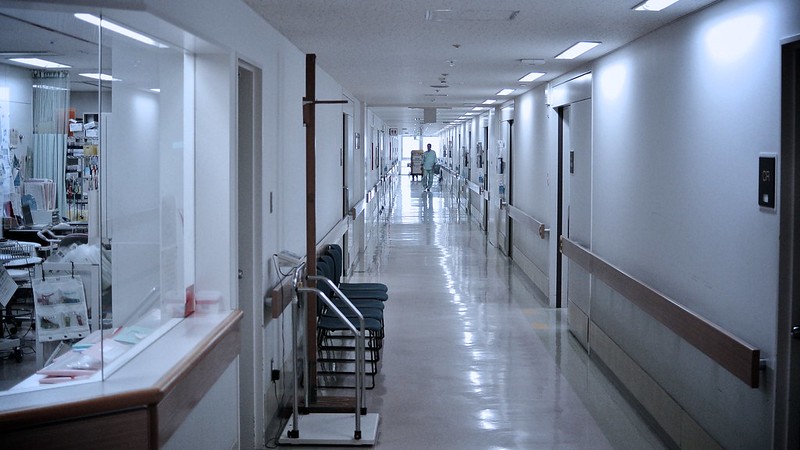photo by MIKI Yoshihito
The number of Delta infected patients in Japan has been increasing since the first infection case was detected. Particularly in big cities like Tokyo and Osaka, more than 1000 new cases are found everyday. This is far faster than the spread speed in the first half of this year. Also, a few tragic cases were reported that admission of some emergency patients could not be admitted to hospital due to shortage of hospital beds. Therefore, many foreign residents are worried about such an uncertain situation.
Japan’s medical system under COVID-19 crisis
As you know, the number of Delta infected patients is rapidly increasing in Japan. As of the beginning of September, there were about 200,000 active cases in Japan. In Tokyo, the number of severe case and hospitalized cases were 270 and 4,200 respectively, out of 27,000 active cases. However, these numbers are far less than those of Europe and U.S. in last year when they had healthcare collapses. Then, why Japan’s healthcare system is being close to collapse?
There are many hospitals clinics with beds in Japan, though, the majority of them are privately owned. That means, levels of medical facilities and preparedness are all up to each hospital or clinic. Consequently, such variations in medical facilities makes it hard to align correspondence to a pandemic when a straightforward top to down system conducted by the government is required. Also, medical institutions need extra number of staff to treat COVID-19 patients, therefore, sometimes they are not able to accept COVID-19 patients because of labor shortage even though they have enough number of beds.
Currently in Japan, COVID-19 positive patients who are decided by doctor to be hospitalized stay in hospital, and the rest of positive patients are to self-isolate in quarantine facilities or home. The best way to self-isolate is to stay in a quarantine facility, but some choose to self-isolate at their home because of personal reasons.
What to do when you become COVID-19 positive
If you have cold-like symptoms such as cough, runny nose, sore throat, high temperature, fatigue, etc. or you become a close contact, what should you do?
I. Initial response
- If you suspect that you may have an infection, contact your doctor or your closest public health center (PHC) and explain your symptoms.
- Following instructions from your doctor or PHC staff, have a PCR test.
- If you are positive: The institution that tested you will contact PHC. If doctor decided, you will be hospitalized. Otherwise, stay home without going out and wait until you get contacted by PHC staff.
II. If you are instructed to self-isolate in a quarantine facility
- Once you are instructed by PHC, go to a designated facility by designated transport method.
- For a certain period (10-14 days), you are required to stay in the quarantine facility to rest, and to record your condition. You need to bring change of clothes and other livingware. Meals are provided.
- Once you are instructed by quarantine facility staff, you can check out and go home.
III. If you are instructed to self-isolate at home
- Once you are instructed by PHC, stay home without going out at all for a certain period.
- Record your health condition and report it to PHC everyday (PHC will ring you once a day).
- Once you are permitted by PHC, you are free to go out.
When you self-isolate
If you get a positive result and hospitalized or sent to a quarantine facility, you will be looked after by medical staff, and they will provide meals three times a day. However, if you are self-isolating, you will have to look after yourself and contact outside party when your condition turns worse. PHC staff will contact you once a day, but that may not be enough. Therefore, just remember and prepare for the following.
- Contact of your doctor that you can call when you get a positive result
- Contact of your closest PHC
- Whether there is food delivery service by your local government, and if yes, their contact number
- Whether there is rental pulse oximetry service by your local government (There are some cases that patients do not realize the decline of oxygen saturation and turn worse suddenly. You need to check oxygen saturation regularly.)
- Regularly check COVID-19 Information Website of your local government
COVID-19 Information Website (Multi-lingual: Hokkaido, Tokyo, Osaka)
Hokkaido
Tokyo
Aichi
Osaka
Fukuoka
When you are unwell, other than COVID-19
While there is serious shortage in hospital beds for COVID-19 patients, another concerning issue has arisen: people across Japan tend to refrain from visiting medical institutions for fear of getting infected. But remember, those medical professionals exercise thorough prevention measures, requesting patients to wear face masks, sanitize their hands, checking temperature upon arrival. Also, many hospitals and clinics are accepting visits only by appointment, or providing online or over-the-phone interviews. If you need to visit a medical institution for regular check-up or illness other than cold or flu, just were adequate PPE and go to see the doctor as normal.
Stay strong
Well, no one knows when this COVID-19 pandemic ends. Japan has had a record-breaking number of active cases, and hospital beds are in shortage. The Delta variant is a lot more contagious than early type of the new corona virus, thus we need more thorough prevention. Yes, you need to wash hands and rinse your mouth regularly, but even though you follow all those prevention methos, you just can’t be completely safe. So, it is very important to know what to do when you get infected and Japan’s current medical system, just in case.

